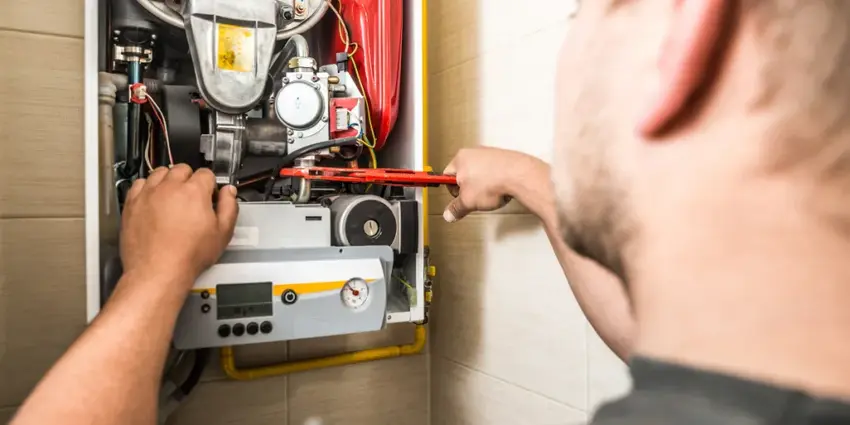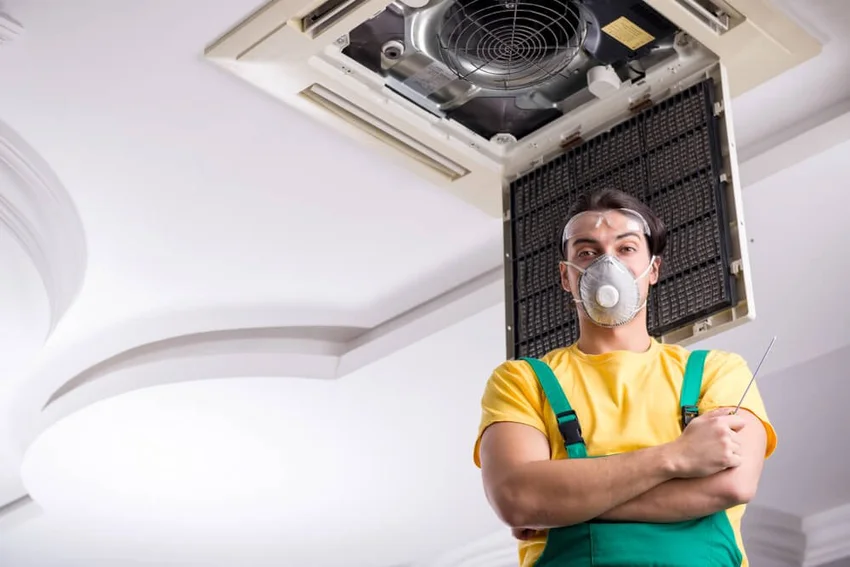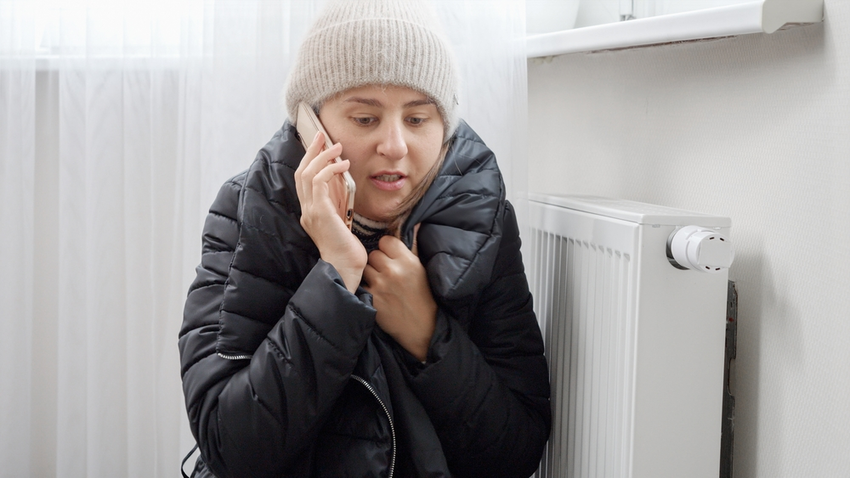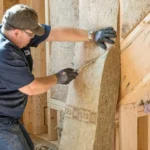Regular furnace maintenance prevents costly breakdowns, improves energy efficiency, and extends the life of your heating system. Whether you’re a new homeowner or an experienced DIYer, understanding your heating system maintenance routine is the key to year-round comfort and lower utility bills.

Content
Why Furnace Maintenance Is Non-Negotiable
Neglecting furnace maintenance might save you time in the short term, but it can lead to significant issues down the line. A furnace that isn’t properly maintained will have to work harder to heat your home, increasing energy consumption and placing unnecessary strain on its components. Proper heating system maintenance not only optimizes comfort, but it also ensures safety, better indoor air quality, and more efficient operation.

According to the U.S. Department of Energy, a furnace that receives regular maintenance performs up to 15% more efficiently than an unmaintained unit. That means lower energy costs for homeowners who prioritize maintenance. Additionally, a well-maintained furnace helps reduce the risk of dangerous conditions, such as carbon monoxide leaks or fire hazards. An annual HVAC maintenance service is a smart investment that can help you avoid expensive repairs and unexpected breakdowns.
Recognizing When Your Furnace Needs Attention
It’s essential to recognize when your furnace is showing signs of wear and tear. Early identification of potential issues can prevent more severe damage later on. Some of the most common indicators that your furnace requires attention include:
- Inconsistent heating: Some rooms are cold while others feel warm.
- Unusual noises: If your furnace starts making strange sounds, like banging or squealing, it might be time for a furnace repair.
- Unpleasant odors: A musty or burning smell suggests that your furnace needs thorough cleaning or attention.
- Rising energy bills: A furnace working overtime is often the cause of an increase in your energy bills.
- Thermostat problems: If your thermostat isn’t maintaining the correct temperature, your system may need recalibration or service.
Ignoring these signs could lead to further damage, so addressing them promptly with professional furnace service can save you from more costly issues down the line.
A Homeowner’s Guide to DIY Furnace Maintenance
Before you call a professional, there are several maintenance tasks you can perform to keep your furnace running smoothly. Always ensure you turn off the power and gas supply to the unit before starting any maintenance. Here is a quick guide to help you manage basic furnace cleaning and maintenance:

- Change the air filter regularly, ideally every 1–3 months, to maintain optimal airflow.
- Inspect the air vents and ducts for dust and debris that could obstruct airflow.
- Vacuum around the furnace to prevent dust buildup.
- Clean the pilot light and burners, using a soft brush to remove debris.
- Check the thermostat to ensure it’s functioning properly and replace any necessary batteries.
These simple tasks can help improve the efficiency of your furnace, reduce energy waste, and extend the life of your unit. If you don’t feel confident performing these tasks, don’t hesitate to seek professional assistance. A regular HVAC tune-up will keep your system running at its best.
When to Seek Professional Furnace Service
While DIY maintenance can help keep things running smoothly, there are certain tasks that require professional expertise. Scheduling furnace service is essential if you notice any of the following:

- It’s been more than a year since your furnace was last inspected.
- The furnace continues to make unusual noises or produce unpleasant odors.
- There are signs of moisture, rust, or corrosion around the unit.
- The system isn’t providing adequate heating or is malfunctioning.
A certified technician will provide a thorough HVAC tune-up, addressing potential issues such as worn-out components, blocked vents, or improper gas pressure. Regular professional maintenance ensures your furnace is safe, efficient, and ready to perform when you need it most.
Furnace Tune-Up vs. Furnace Repair: Key Differences
While both furnace tune-up and furnace repair are critical for your heating system’s performance, they serve different purposes. A furnace tune-up is preventive maintenance that focuses on enhancing the furnace’s overall efficiency and reliability. It includes tasks such as cleaning components, inspecting for wear, and adjusting settings to ensure optimal performance.
Furnace repair, however, is reactive and typically required when a specific part of the furnace fails. Whether it’s the blower motor, heat exchanger, or ignition system, furnace repair addresses specific issues to restore functionality.
To prevent costly repairs, it’s advisable to schedule a furnace tune-up at least once a year. Routine maintenance is far more affordable than fixing an entire system that breaks down due to neglect.
Time to Replace Your Furnace? Signs You Need a Furnace Replacement
Even with the best care, every furnace has a lifespan. On average, a well-maintained furnace can last between 15 and 20 years, but there are times when replacing it becomes necessary. Here are a few signs that it might be time for a furnace replacement:

- Age of the furnace: If your furnace is more than 15 years old, you might start experiencing frequent issues, which could indicate it’s nearing the end of its useful life.
- High repair costs: If repairs are becoming more frequent or expensive, it may be more economical to replace the furnace.
- Energy inefficiency: Older furnaces are less energy-efficient, leading to higher heating bills. Upgrading to an energy-efficient furnace can save you money in the long run.
- Inconsistent heating: If your furnace struggles to maintain a comfortable temperature throughout your home, it might be a sign that it’s no longer operating efficiently.
Investing in a modern, energy-efficient furnace can improve both comfort and savings while ensuring the safety of your home.
Seasonal Furnace Maintenance Tips for Optimal Performance
Routine furnace maintenance should include seasonal HVAC tune-ups to ensure it’s ready for the heating season. Taking care of your furnace in the spring and fall can make a significant difference in its longevity and efficiency:
Spring Tips:
- Turn off the furnace and clean the area around the unit.
- Seal any leaks in the ductwork.
- Consider scheduling a furnace service during the off-season when professionals may offer lower rates.
Fall Tips:
- Start the furnace early to ensure it’s working correctly before the cold weather hits.
- Replace furnace filters and check vents for obstructions.
- Call a professional for a full HVAC tune-up to get your system ready for winter.
Regular seasonal checks allow your furnace to operate efficiently and help prevent breakdowns during the colder months.
Conclusion
Proper furnace maintenance is essential to keep your home warm, safe, and energy-efficient. By staying proactive and addressing issues early, you can avoid costly repairs and extend the lifespan of your furnace. Whether you’re performing basic maintenance or scheduling a professional HVAC tune-up, these actions will ensure your heating system is in top condition throughout the year.
Don’t wait for a breakdown—make furnace maintenance part of your home care routine today for a comfortable tomorrow.
Frequently Asked Questions
How often should I service my furnace?
It’s recommended to have your furnace serviced once a year, ideally in the fall, before the heating season begins.
What does a furnace tune-up include?
A tune-up typically includes cleaning, lubricating parts, inspecting components, and adjusting settings for optimal performance.
Can I perform furnace maintenance myself?
Basic tasks like replacing filters and cleaning vents can be done by homeowners, but more in-depth maintenance should be handled by professionals.
When should I consider a furnace replacement?
If your furnace is over 15 years old, requires frequent repairs, or your energy bills are rising significantly, it might be time to replace it with an energy-efficient furnace.

Christine Kelley is a dedicated home blogger who has been blogging for over six years. She covers everything home related. Christine also loves writing posts about her travels to Europe with her husband and two children.





